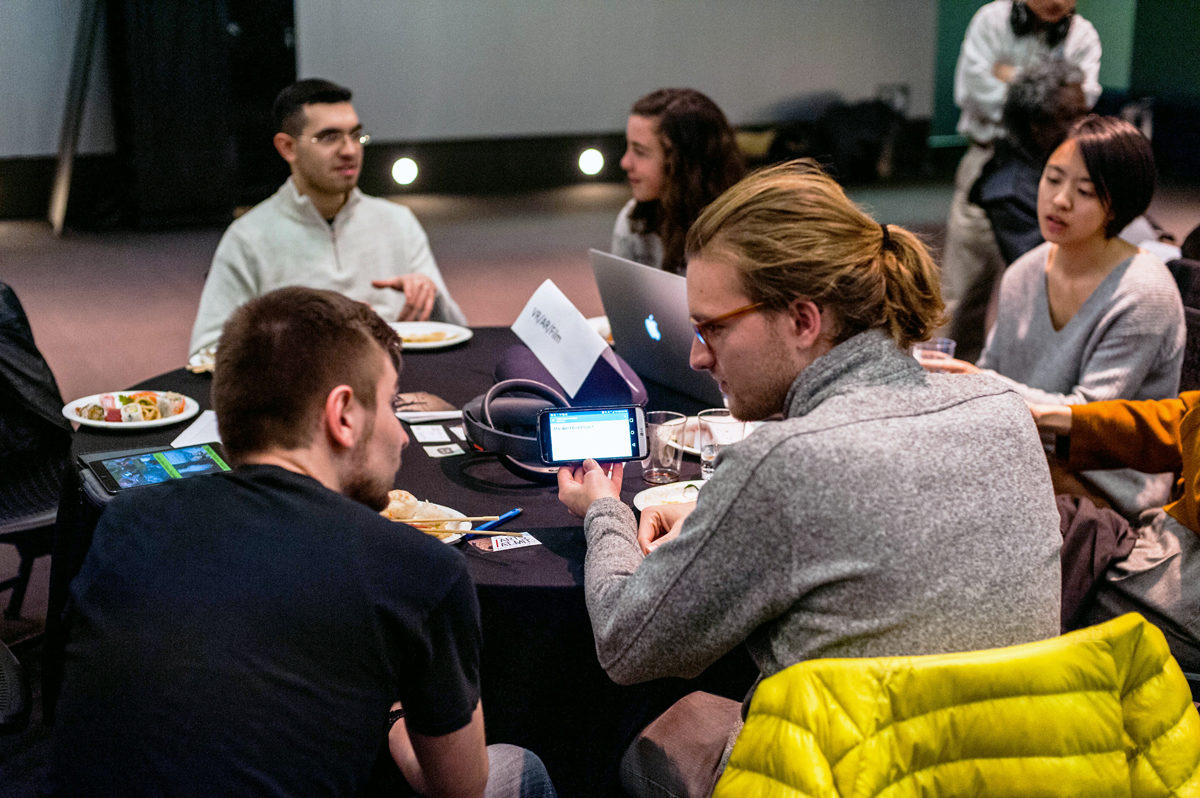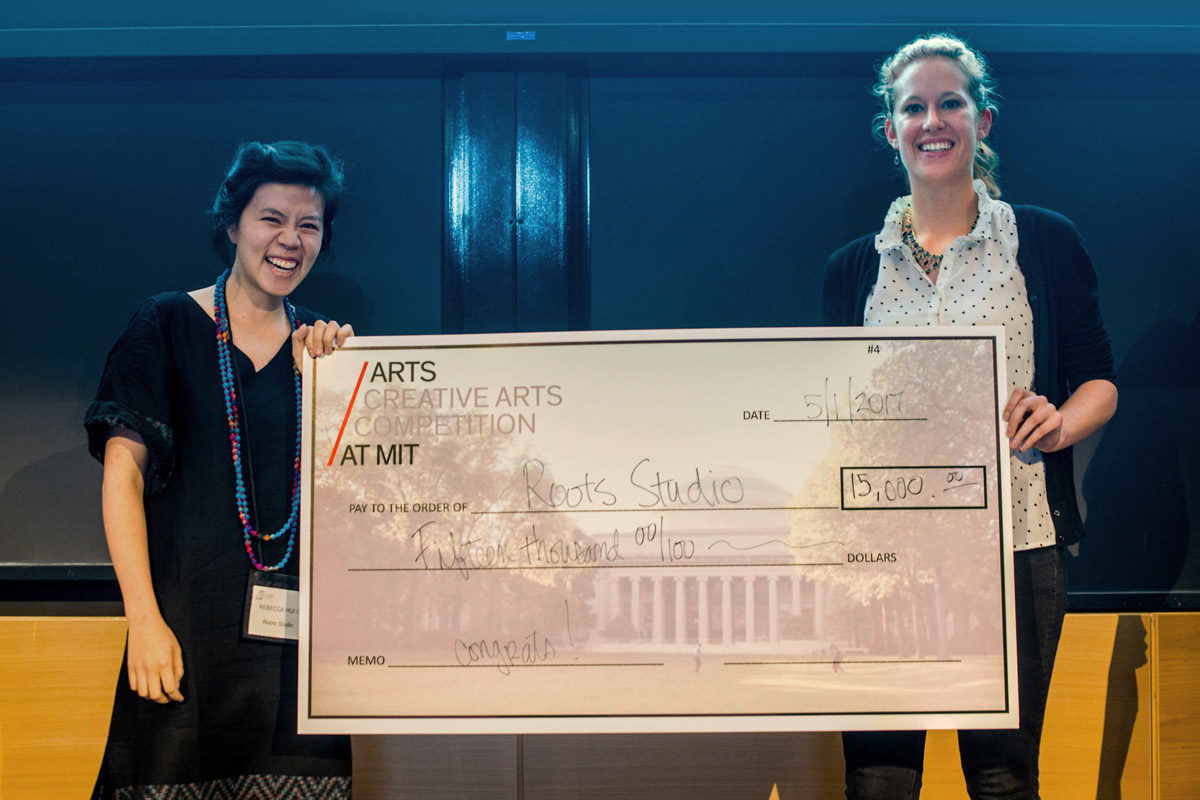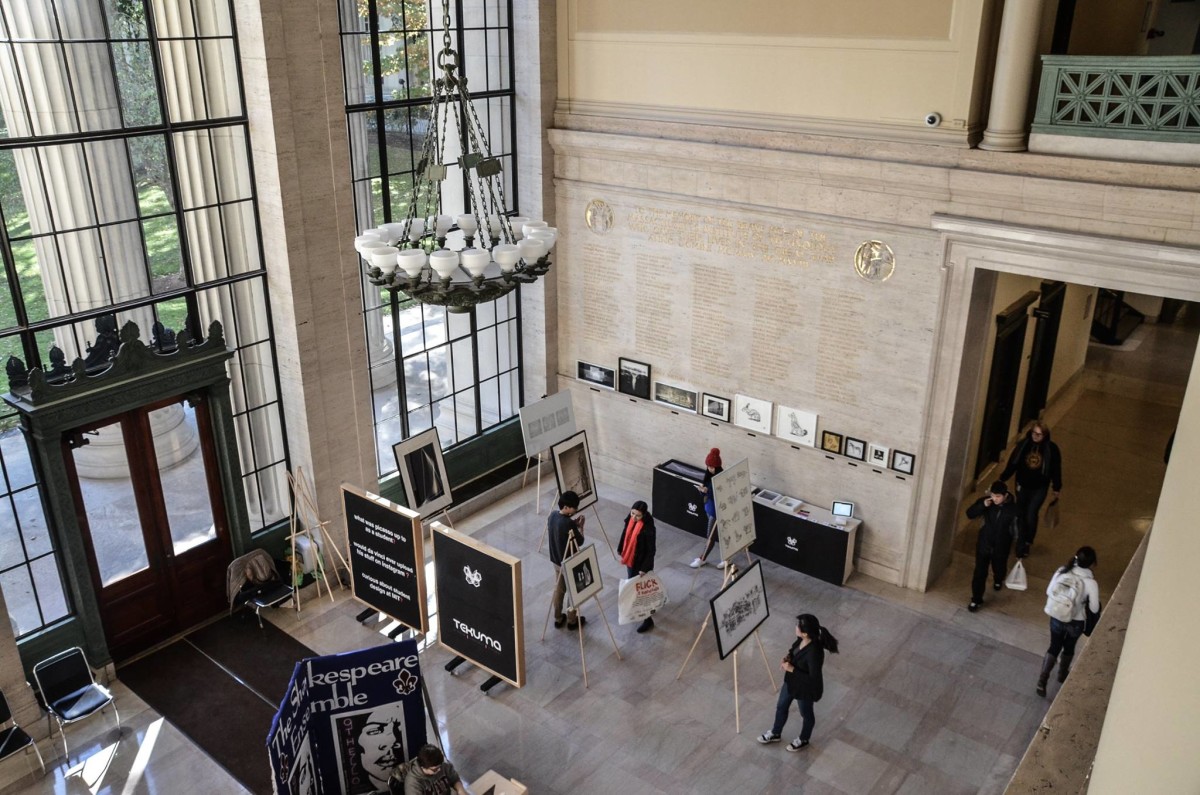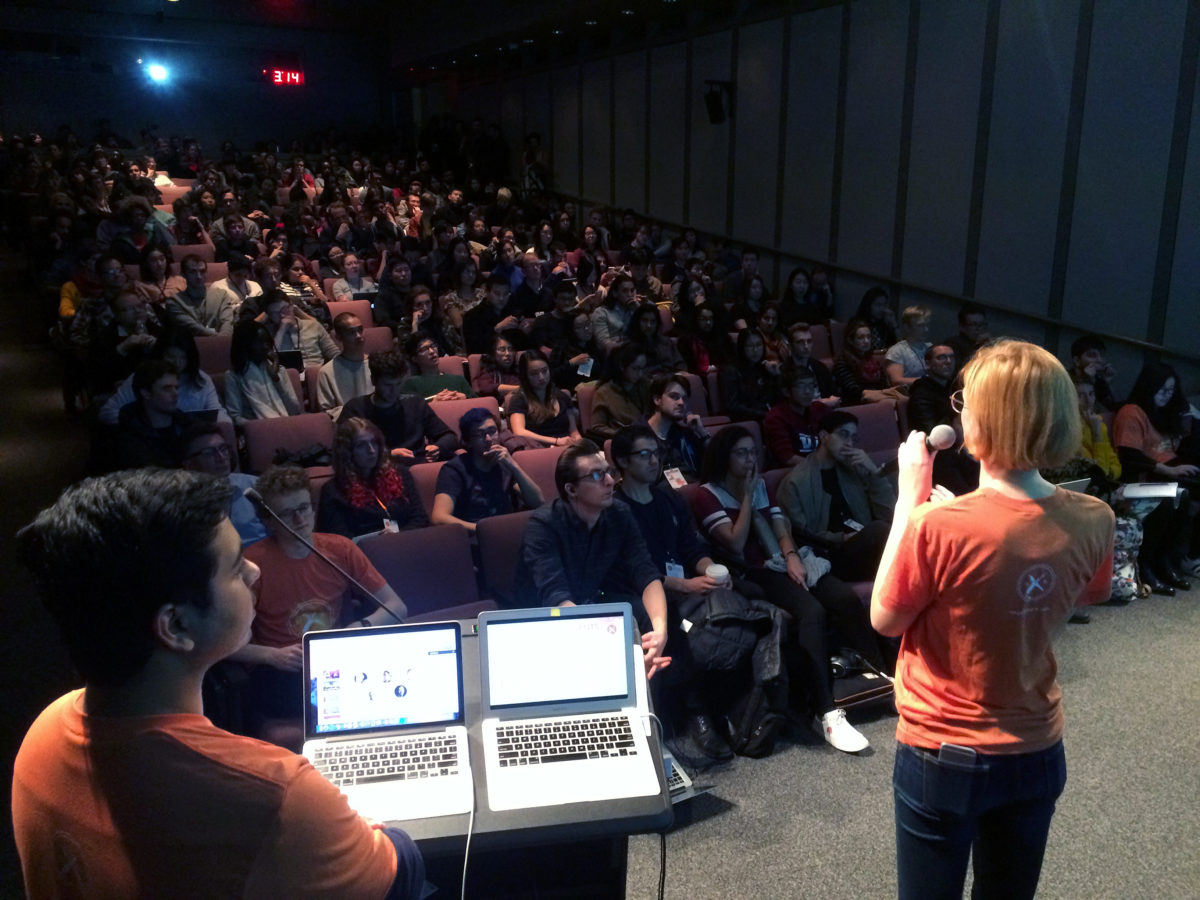Bose, BuzzFeed, E*Trade, Gillette, Huffington Post, Texas Instruments, Zipcar—those are just a few familiar companies founded by MIT alumni. With MIT’s “lab to market” ethos, it may come as no surprise that thousands of alumni have turned their research findings into thriving businesses. Moreover, the entrepreneurially-inclined cut across all disciplines, including art and design.
Despite a lingering myth that art and business are incompatible, the creative industries are a driving force in the US economy, contributing $698 billion to the GDP (with the lion’s share being generated by Hollywood) and roughly 4.32% of U.S. goods and services in 2015, according to the most recent report by the Bureau of Economic Analysis (BEA) and the National Endowment for the Arts (NEA).
In April 2017, a Creative Industries Study published by Americans for the Arts reported that, “Nationally, 673,656 businesses are involved in the creation or distribution of the arts, and they employ 3.48 million people.” It states, “Arts businesses and the creative people they employ stimulate innovation, strengthen America’s competitiveness in the global marketplace, and play an important role in building and sustaining economic vibrancy.” This data reflects both nonprofit and for-profit businesses, including museums, symphonies, and theaters as well as film, architecture, and advertising companies.
While some universities ignore these economic arguments and gut their arts and humanities departments at their students’ peril, MIT takes a different approach. The Institute has, over time, broadened the role of these disciplines in the curriculum and spawned new initiatives to foster arts entrepreneurship throughout the year—from Hacking Arts in the fall to the Creative Arts Competition each spring. Rather than teach artists and designers business skills, or train the next generation of cultural leaders in arts management programs, arts entrepreneurship at MIT joins sound entrepreneurial practice—which requires identifying a gap in the market, not merely launching a small business—with the innovative use of technology to further the creation and dissemination of the arts.
Long known for inventing new technologies for artistic production, the Media Lab represents an emerging emphasis on creative startups with arts at the core. Also, in the School of Architecture and Planning, designX, a year-long academic accelerator program (and first of its kind in a school of design), supports students, faculty, staff, researchers and alumni in the development of new products and technologies across design disciplines.
“These opportunities in the arts entrepreneurship world at MIT allow us to speak to people who understand that there are things that can’t be tracked, measured, quantified, or FDA approved, yet are still incredibly valuable and transformative to cities,” says Ellen Shakspear of Spaceus, one of the eight teams competing in the 2018 Creative Arts Competition and a member of the 2018 designX cohort. “We’re very grateful for the opportunities both to pitch alongside people curing cancer [in the 100K Entrepreneurship Competition or MIT Sandbox], but also to pitch in this space where we’re talking about those less tangible metrics as well.”
April 30th marks the next Creative Arts Competition. At the annual event, finalists vie for $15,000 seed money to launch a startup with the arts at its core. To inspire these student entrepreneurs, we are highlighting a few of the creative ventures founded by MIT alumni. The founders of these companies demonstrate that art training—whether in music, game design, architecture, textiles, fashion or filmmaking—often leads to fiscal success (among other, more indelible benefits).
CREATIVE COMPANIES WITH MIT ORIGINS
Depict
Depict is a platform designed to help you browse, collect and display museum-quality art at home on a a 49″ 4K digital canvas, the “Depict Frame.” When paired with the Depict app, users can display artwork from curated collections or their own images.
Founders: Kimberly Gordon, MBA ’13 (Sloan); Shambhavi Kadam, SB ’06 (Aerospace Engineering), MBA ’12 (Sloan)
Harmonix
Harmonix is one of the world’s leading independent game development studios, creators of the blockbuster Rock Band and Dance Central franchises, the newly released iOS video music app VidRhythm, as well as the original developers of Guitar Hero.
Founders: Eran Egozy SB ’95 (Electrical Engineering and Music), MEng ’95; and Alex Rigopulos SB ’92 (Music and Theater Arts), SM ’94
Holosonic Research Labs, Inc.
Holosonics’ Audio Spotlight focuses sound in a narrow beam. Sound tends to be omnidirectional, but this technology allows a small loudspeaker to have strong directivity, because it merges the beamlike nature of ultrasound with the qualities of audible sound. Holosonics’ founder Joseph Pompei—who at age 16 began his career in acoustics as the youngest engineer at Bose Corporation—had the initial idea to use ultrasound as an acoustic projector, and developed the fundamental technology at the MIT Media Lab while earning his PhD. Many artists and musicians have used the Audio Spotlight system in their work. Read more about Joseph Pompei and the technology in the New York Times and the MIT Tech Review.
Founder: Joseph Pompei, PhD ’02 (Media Lab)
Learning Beautiful
Learning Beautiful, developed at the Social Computing Group in the MIT Media Lab, designs timeless wooden toys to provide a simple and effective platform to teach children the basics of computer science without computers. Their Montessori-inspired toys engage students with concepts such as binary counting, Boolean logic, sorting, patterns, data structures, image representation and abstraction.
Founders: Kimberly Smith, SM ’17 (Media Lab); Yonatan Cohen, MAUD (Harvard), researcher and lab manager, Social Computing Group, MIT Media Lab
Maggie Orth’s International Fashion Machines
International Fashion Machines, Inc., innovates electronic textiles. Electronic textiles incorporate conductive materials directly into the textile itself. IFM’s unique intellectual property, patents, knowledge and trade secrets in e-textile technology result in a range of novel design products.
Founder: Maggie Orth, SM ’97 (CAVS), PhD ’01 (Media Lab)
Ministry of Supply
Ministry of Supply creates technologically advanced office apparel, using some of the same temperature regulating material as NASA astronauts in their clothing. Aman Advani, Kit Hickey, Kevin Rustagi, and Gihan Amarasiriwardena met as students at MIT, where they quickly realized they shared a vision for everyday clothing that could perform as well as their athletic gear.
Founders: Aman Advani, MIT Sloan (on leave); Kit Hickey, Entrepreneur-in-Residence at the Martin Trust Center for MIT Entrepreneurship and Lecturer at the MIT Sloan School of Management; Kevin Rustagi SB ’11 (Mechanical Engineering); and Gihan Amarasiriwardena SB ’11 (Chemical and Biological Engineering)
Oblong
Founded in 2006, Oblong delivers a better human-computer interface. Oblong CEO John Underkoffler, a pioneering researcher into spatial computing in the Tangible Media Group at the MIT Media Lab, was enlisted by Hollywood to envision the future of human-computer interface for films such as Minority Report, The Hulk and Iron Man. Through these films his work has been amplified and influential to a generation of developers, earning him a National Design Award in 2015. Oblong’s computing systems are gestural systems that are spatial, networked, multi-user, multi-screen, multi-device, multi-location computing environments.
Founder: John Underkoffler SB ’88, SM ’91 (Media Lab), PhD ’99 (Media Lab)
Roots Studio
Roots Studio offers limited edition, unique art prints in partnership with artists in rural India, Indonesia, and Syria/Jordan. They enable artists to participate in the global economy without having to be in an urban center. Roots Studio won first place in the 2017 Creative Arts Competition at MIT. They envision “the prosperous village,” “livelihoods supported by craft skills that have been passed down from generation to generation,” and a way “to counteract the flight of villagers to cities.”
Founders: Rebecca Hui, Master’s candidate, Urban Studies; Macauley Kenney, Fellow, Technology and Policy Master’s Program
Soofa
Soofa works with city leaders, parks conservancies, campuses and private sector partners to improve public spaces with its smart benches and E Ink signs. Soofa benches offer a place to sit and relax and also a place to charge your smartphone. These solar-powered benches provide a modular, affordable alternative to more permanent infrastructure.
Founders: Sandra Richter, SM ’14 (MIT Media Lab); Nan Zhao, PhD ’17 (MIT Media Lab); and Jutta Friedrichs, Master in Design Studies ’12 (Harvard)
Tactable (grew out of Nearlife)
A pioneer in the field, Tactable has developed and refined its own multi-touch technology—both hardware (tables and walls) and software (touch-sensing system). Their interactive tables and walls track dozens of simultaneous finger and object interactions enabling people to interact naturally with ancient antiquities, art, music or film. Tactable’s parent company Nearlife, founded in 1996, developed one of the first public interactive touch tables for the Museum of Modern Art (MoMA) in New York. Since that time, they have designed and created interactive installations for many museums, including the Museum of Science and the Museum of Fine Arts in Boston, the Smithsonian National Air & Space Museum, New York’s Museum of Modern Art, the Detroit Institute of Art, among others.
Founder: Tinsley Galyean, PhD ’95 (Interactive Cinema, MIT Media Lab)
Tekuma
Tekuma’s core mission is enhancing the experience of residential and commercial space through art. This innovative art curation platform connects artists to real estate developers to transform any space into an exhibition venue, in hopes of boosting both the aesthetic value and real estate value. The startup was founded in 2016 at MIT by graduates in real estate development and architecture.
Founders: Marwan Aboudib, SM ’15 (Real Estate Development), MArch ’15 (Architecture); Kun Qian, SM ’15 (Real Estate Development), MArch ’16 (Architecture)






